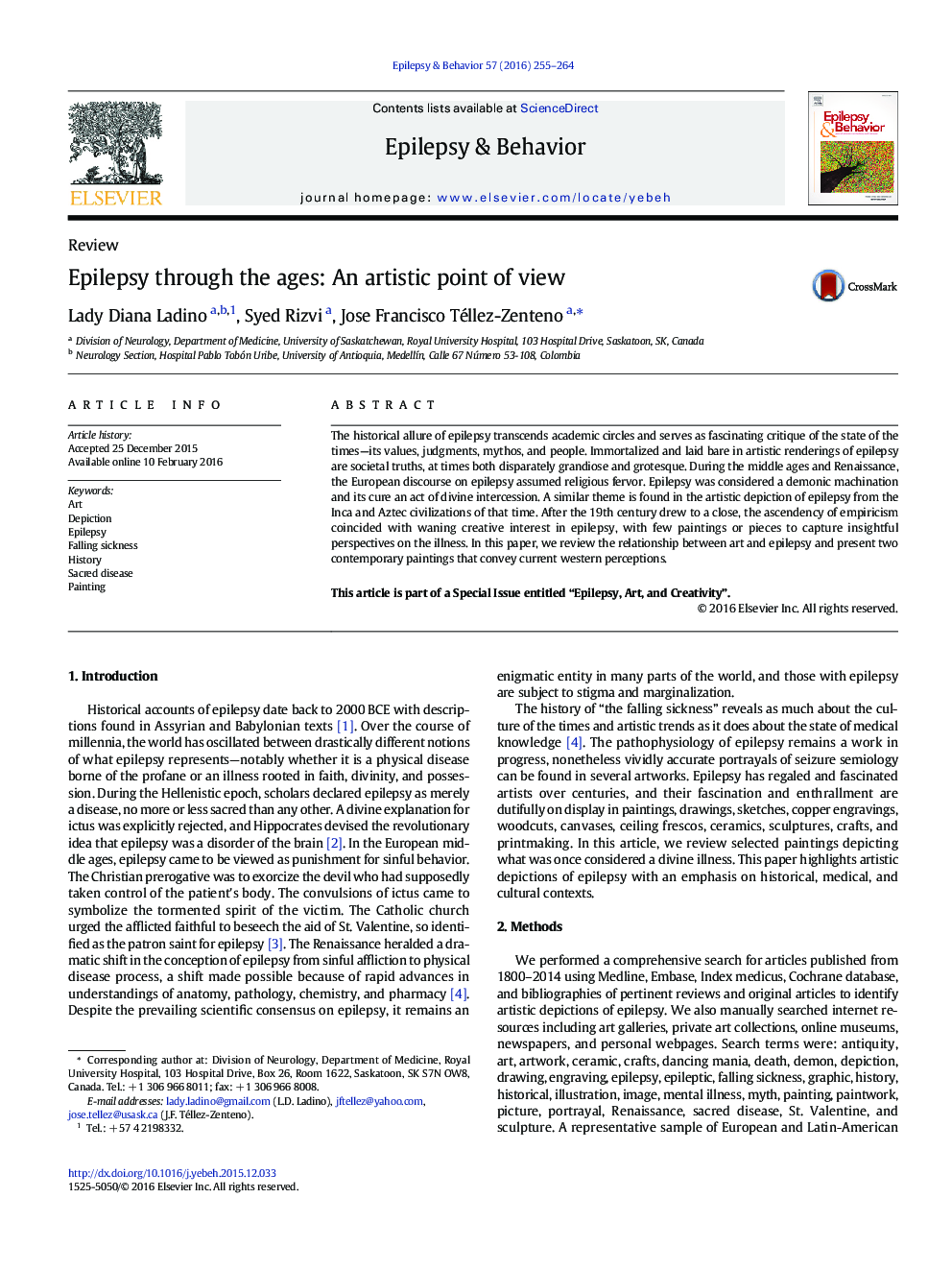| کد مقاله | کد نشریه | سال انتشار | مقاله انگلیسی | نسخه تمام متن |
|---|---|---|---|---|
| 3049573 | 1185878 | 2016 | 10 صفحه PDF | دانلود رایگان |
• The painting “Wired” depicts a modern representation of epilepsy. It depicts abnormal brain connectivity in patients with epilepsy.
• The painting “Epilepsy, leaving the nightmare behind” represents hope for patients who go through epilepsy surgery.
• The “Red curtain” is the icon of the Stiftung Michael foundation against epilepsy.
• The painting “Inca skull surgery in Machu Pichu” portrays early skull surgery under primitive conditions in the Inca period.
• Tlazolteotl is known as the Aztec goddess of epilepsy.
The historical allure of epilepsy transcends academic circles and serves as fascinating critique of the state of the times—its values, judgments, mythos, and people. Immortalized and laid bare in artistic renderings of epilepsy are societal truths, at times both disparately grandiose and grotesque. During the middle ages and Renaissance, the European discourse on epilepsy assumed religious fervor. Epilepsy was considered a demonic machination and its cure an act of divine intercession. A similar theme is found in the artistic depiction of epilepsy from the Inca and Aztec civilizations of that time. After the 19th century drew to a close, the ascendency of empiricism coincided with waning creative interest in epilepsy, with few paintings or pieces to capture insightful perspectives on the illness. In this paper, we review the relationship between art and epilepsy and present two contemporary paintings that convey current western perceptions.This article is part of a Special Issue entitled “Epilepsy, Art, and Creativity”.
Journal: Epilepsy & Behavior - Volume 57, Part B, April 2016, Pages 255–264
